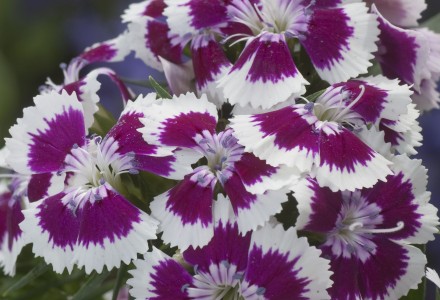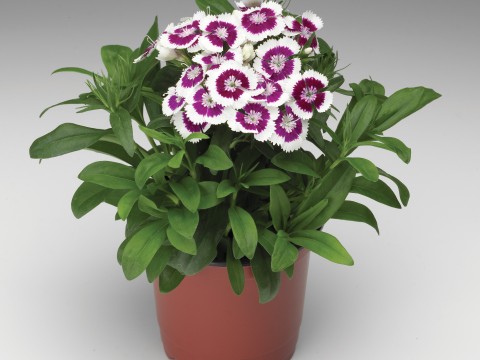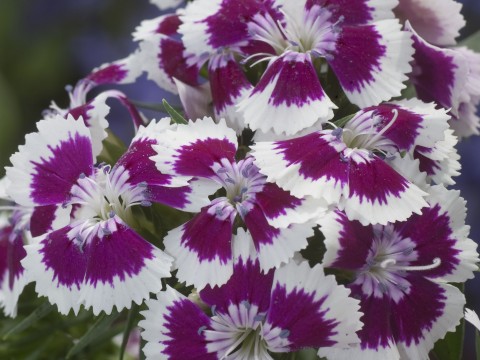Judged at the European FlowerTrials® by over 25 international, industry specialists from press to auctions to growers this abundantly flowering Dianthus (hence Diabunda) was the clear favourite for its superb point of sale performance and market potential. The judges raved about the uniformity, floriferousness and excellent quality of the plants and were wildly enthusiastic about the striking, trendy purple & white colour combination.
Use
Dianthus x barbatus ‘Diabunda™ Purple Picotee’ is a Sweet William look-alike bred with Dianthus chinensis genetics for all-season use in bedding and containers. The new FleuroStar Winner is suitable for cultivation in spring and summer and is an exceptional addition to the current range of autumn-flowering plants. This multi season functionality makes it unique in the Dianthus family.
Market Value
‘Diabunda™ Purple Picotee’ is a member of a 6-colour series showing open flowers and plenty of buds, a real benefit for the retailer, while the striking purple & white picotee patterning on this Fleuroselect Industry Award winner can’t fail to be an eye-catching advantage on the garden centre benches. Unique for the growers is that Diabunda™ is almost day-length neutral and needs far less PGRs than regular Dianthus. For the plug producers the germination level of both raw seeds and pelleted seeds at above 90% is a definite plus.
The consumer and landscaper will find these charming plants stunning in single displays and also discover that the bicolour combination is perfect as a centre point in mixed containers. As the season progresses, the consumer will delight in realising that the inbred hybrid Dianthus chinensis genetics have produced a variety which is top-flowering, larger bloomed and therefore showier than standard Sweet William while the smaller, darker leaves accentuate the blooms. The plants are mor ver easygoing requiring low maintenance and no deadheading. The final result: a true Fleuroselect champion!
Background information
Dianthus is a genus of about 300 species in the carnation family Caryophyllaceae, the name Dianthus originating from the Greek words dios (“god”) and anthos (“flower”). Species of divine Dianthus have been gracing gardens for centuries with Dianthus barbatus or the Sweet William being one of the most well-loved. Dianthus cross pollinates easily and the traditionally perennials have recently been replaced by interspecific hybrids bred for superior annual performance bringing versatility for both growers and consumers. Dianthus x barbatus Diabunda™ is the perfect product of these modern breeding techniques being a Sweet William look-alike, which is exceptionally large bloomed and top-flowering combined with a unique, multifunctional spring to autumn flowering season.





